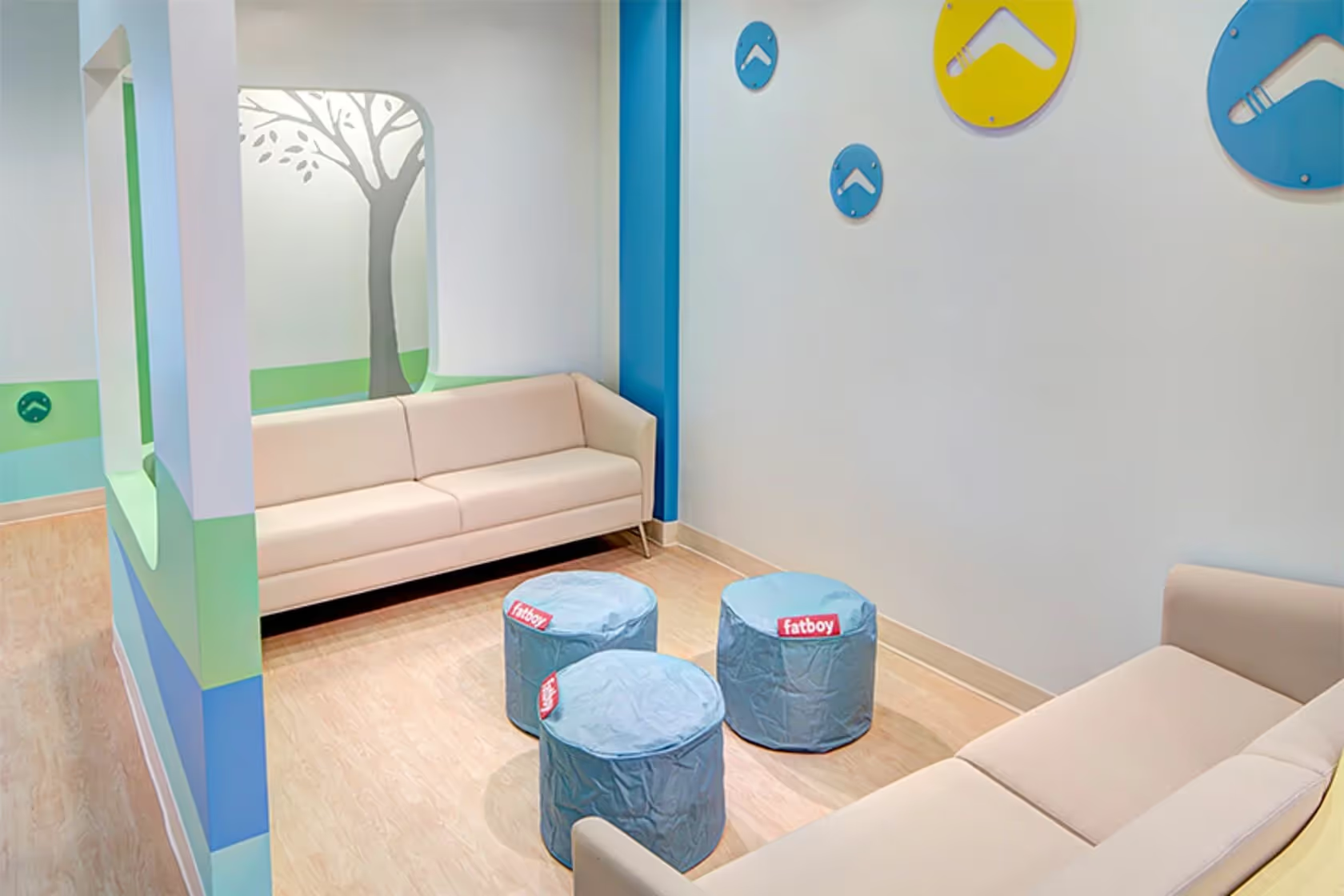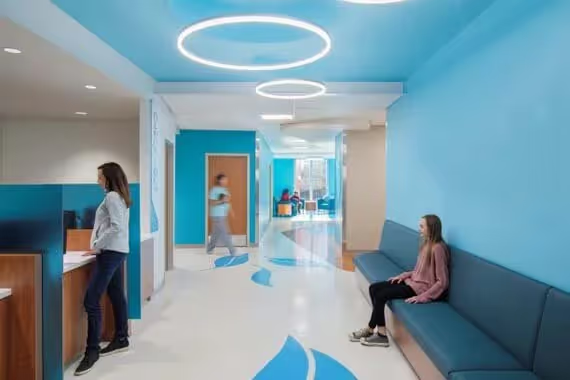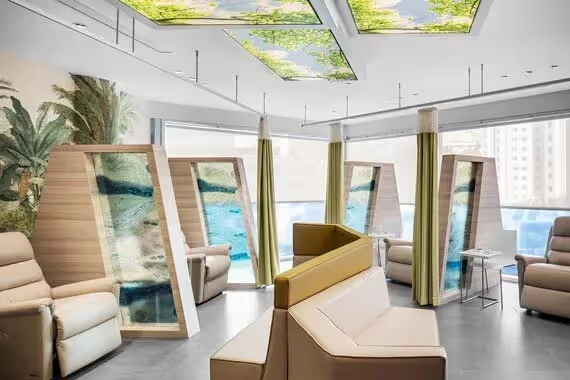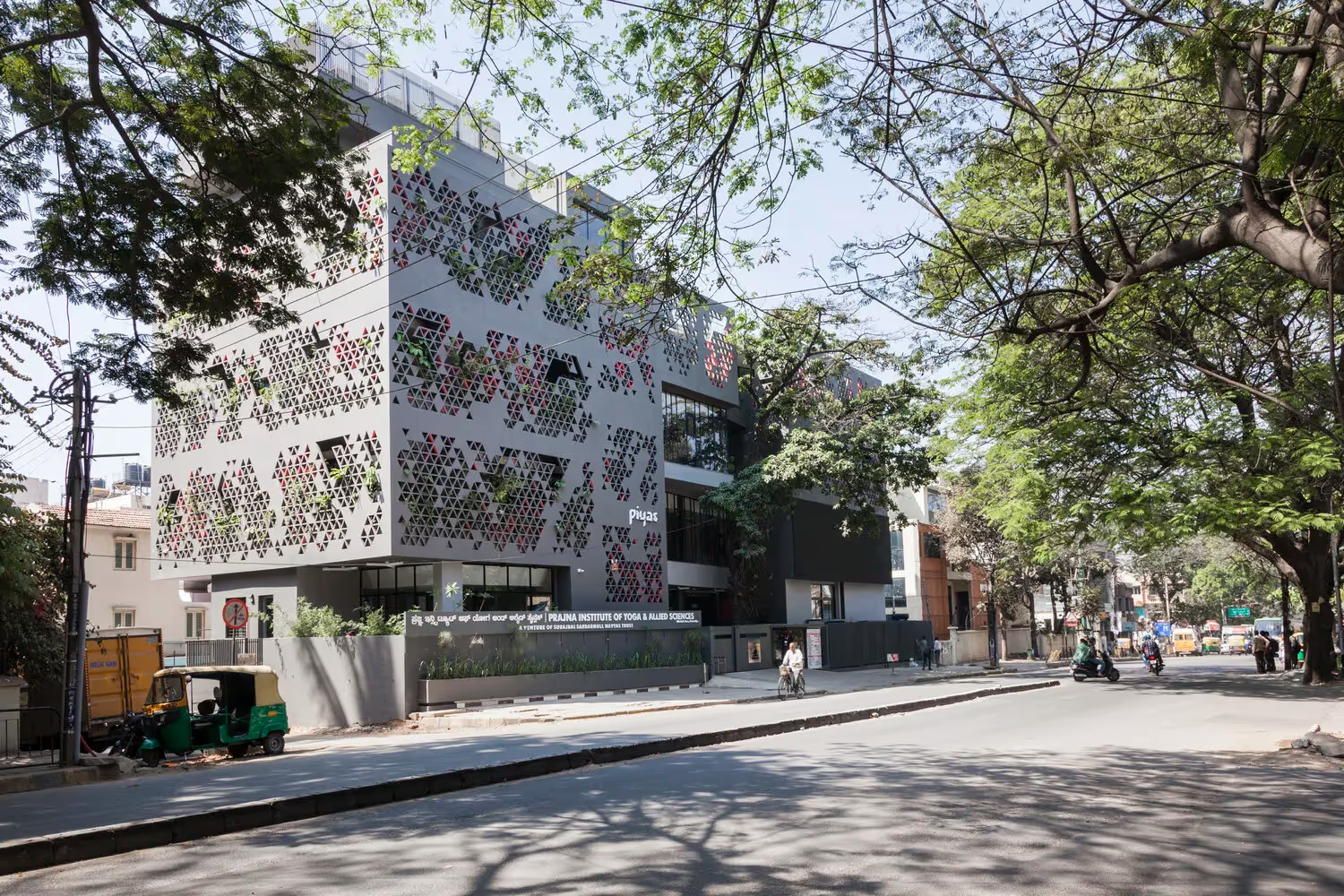8 Good, Bad, and Ugly Hospital Waiting Rooms
How can hospitals make an immediate, positive impact on how their patients feel while visiting? The most obvious answer is to start with where the majority of their visitors head towards - the waiting room. Here are examples of good, bad, and ugly hospital waiting rooms.

No matter what you’re going to the hospital for at some point during your visit you’ll end up in one of their waiting rooms. Either you’re going there to wait for the doctor to see you or to get an “okay” from the staff to visit the person you came to see.
Spending the majority of your time there wouldn’t be a problem if it was enjoyable. However, that’s often not the case. In fact, 63% of patients say that the most stressful aspect of their appointment is waiting.
So how can hospitals make an immediate, positive impact on how patients feel while visiting? The most obvious answer is to start with where the majority of their visitors head towards - the waiting room.
But this is a bigger project than you might think, especially for massive facilities that have hundreds of these rooms filled with patients every day. That’s hundreds of thousands of dollars at stake.
Before any facility undertakes this project, it all starts with looking at examples to start the brainstorming process.
Here are examples of good, bad, and ugly hospital waiting rooms.
The Good
The following examples are the best of the best. The majority of them are massive healthcare systems that recently underwent a multi-million dollar facelift.
They’re so well designed and inviting to the public that some people go to them leisurely to relax, unwind, or work remotely.
Khoo Teck Puat Hospital

Could you imagine going to the hospital that looks like it’s nestled inside of a natural rainforest? Imagine how much more welcoming it would be to hear sounds of nature while you’re waiting for an appointment.
Well, there’s an actual term for that type of design and it’s called biophilic. Biophilic design comes from the term “biophilia” which describes our affinity for the natural world and how it calms us.
Some major healthcare organizations jumped on this trend early and it’s helping their patients in a big way. Patients whose windows overlook a scene of nature get released from a hospital almost 10% faster.
One of the best examples of a hospital waiting room that’s fully embraced biophilic design is Khoo Teck Puat Hospital located in Singapore.

According to a 2010 case study, the healthcare company commissioned a Singapore-based design firm, CPG Corporation. The firm had to design a building so that, “one’s blood pressure lowers when he/she enters the hospital grounds.”
Five years later, CPG Corporation designed the new campus that gives patients an abundance of natural light, refreshing breezes, and tranquil views. The building itself is V-shaped with its opening facing North to enhance airflow.
It also has four times as much greenery within it than the land it sits on to include rooftop gardens, storm-water ponds, around 200 species of plants. I can’t imagine their staff has to deal with many difficult patients.
Boomerang Health

When you step into a pediatrician’s or children’s hospital’s waiting area, you’d at least hope to see some decoration geared towards appealing to kids. After all, that’s the main demographic of patients for those two organizations.
But a multidisciplinary healthcare center, Boomerang Health, located in Vaughn, Ontario takes that mentality very seriously. They designed their waiting rooms to cater to their most common type of patient - children.

On their website, they state that they designed their entire facility with children’s physical, developmental, and mental health needs in mind.
Their waiting room places a particular emphasis on privacy as it has sectioned off areas for families. The hospital refers to these as “Huddle Rooms” and they also serve as a place where practitioners can consult with patients.
They also provide iPads filled with child-friendly activities to keep them preoccupied while waiting for their appointment.
But even though they’re a children’s facility, they still offer amenities for the parents as well. Parents can visit one of Boomerang Health’s “Family Kitchens” for a hot or cold beverage.
Novak Center for Children's Health

Not every hospital that’s designed great is outside of the United States. Novak Center for Children’s Health in Louisville Kentucky opened up in the Summer of 2018.
The health center takes a less literal approach to biophilic design but still accomplishes it through its murals and motifs.
EYP designed the $79 million facility to reduce patient stress. They achieved this by integrating natural shapes and designs of familiar landscapes seen throughout rural Kentucky.

The facility has colored designated floors based on native animals to Kentucky which appeals to children’s natural sense of wonder while navigating through different waiting rooms. This innovative navigation system also helps make more sense of the different specialties on campus.

Chemothermia Oncology Center

Sometimes patients need to go through long treatment plans or procedures. To perservere through these types of appointments, they’ll need to stay positive. Research by the University of Sydney suggests that people who stay positive recover from their ailment faster.

Chemothermia Oncology Center located in Istanbul, Turkey understands the effect color can have on patient recovery and kept that in mind when designing their waiting room.
The designers of the facility, Sonraki Architecture & Design Ltd., had the goal of increasing patient motivation for those going through long treatment plans. This meant straying away from what a traditional waiting room looked like and using a contemporary style.
Navyas Wellness and Naturopathy Center

Imagine having to build a naturopathy center in a bustling city that has almost 8.5 million people living within it.
Even beyond the building aspect, promoting peaceful, holistic health techniques like meditation, yoga and therapy in a densely populated and noise-polluted area doesn’t seem realistic.
However, Cadence Architects pulled it off in an incredible way. Navyas Neuropathy Center located in Bengaluru, India uses a mix of nature and man-made barriers to keep patients at ease.

A cannonball tree weaves its way through the facility to add to the experience. It’s also covered in modern-looking jali screen that cuts out both city and light noise from the surrounding city. Between the jali and the interior windows of the building sits medicinal plants to help encourage a therapeutic environment.

The Bad
Think of the worst hospital waiting room you’ve ever sat in. If you’re like most people, right now you’re picturing…
- Rows of connected plastic bucket seats
- Off-white walls
- Fluorescent, humming ceiling lights
- Linoleum-tiled floors or beige carpeting
- Endless piles of outdated magazines

Each of these elements isn’t conducive to a beneficial experience. Instead, going to a poorly-designed waiting room actually makes us sicker.
Cramming together the ill with the injured into a jam-packed room creates a petri-dish of harmful bacteria. In fact, over 50% of all confirmed US cases involving the drug-resistant fungus Candida Auris happened in New York and New Jersey hospitals.

The Ugly
If you go to a hospital and the waiting room looks like the picture below, avoid it at all costs.

Obviously, this is a little bit dramatic. This is a picture of an abandoned healthcare facility that landed on Reddit.
You probably wouldn’t end up in a waiting room that looks like this but the point I’m trying to make is the waiting room is an essential piece to patient health and experience.
Some cramped hospital waiting rooms have anywhere between 1,000 and 20,000 germs on their surfaces.
But the rate of bacterial infection can decrease by more than 50% with a simple redesign.
Conclusion
Redesigning a hospital waiting room is not a small endeavor but it’s something worth pursuing.
But the good news is, a lot of healthcare administrators already realize the positive impact of a well-designed waiting room. Specifically, when considering interior design changes.
In this blog post, we covered all the basis from best to worst hospital waiting rooms to make the preliminary planning stages a little easier.
Emphasize your product's unique features or benefits to differentiate it from competitors
In nec dictum adipiscing pharetra enim etiam scelerisque dolor purus ipsum egestas cursus vulputate arcu egestas ut eu sed mollis consectetur mattis pharetra curabitur et maecenas in mattis fames consectetur ipsum quis risus mauris aliquam ornare nisl purus at ipsum nulla accumsan consectetur vestibulum suspendisse aliquam condimentum scelerisque lacinia pellentesque vestibulum condimentum turpis ligula pharetra dictum sapien facilisis sapien at sagittis et cursus congue.
- Pharetra curabitur et maecenas in mattis fames consectetur ipsum quis risus.
- Justo urna nisi auctor consequat consectetur dolor lectus blandit.
- Eget egestas volutpat lacinia vestibulum vitae mattis hendrerit.
- Ornare elit odio tellus orci bibendum dictum id sem congue enim amet diam.
Incorporate statistics or specific numbers to highlight the effectiveness or popularity of your offering
Convallis pellentesque ullamcorper sapien sed tristique fermentum proin amet quam tincidunt feugiat vitae neque quisque odio ut pellentesque ac mauris eget lectus. Pretium arcu turpis lacus sapien sit at eu sapien duis magna nunc nibh nam non ut nibh ultrices ultrices elementum egestas enim nisl sed cursus pellentesque sit dignissim enim euismod sit et convallis sed pelis viverra quam at nisl sit pharetra enim nisl nec vestibulum posuere in volutpat sed blandit neque risus.

Use time-sensitive language to encourage immediate action, such as "Limited Time Offer
Feugiat vitae neque quisque odio ut pellentesque ac mauris eget lectus. Pretium arcu turpis lacus sapien sit at eu sapien duis magna nunc nibh nam non ut nibh ultrices ultrices elementum egestas enim nisl sed cursus pellentesque sit dignissim enim euismod sit et convallis sed pelis viverra quam at nisl sit pharetra enim nisl nec vestibulum posuere in volutpat sed blandit neque risus.
- Pharetra curabitur et maecenas in mattis fames consectetur ipsum quis risus.
- Justo urna nisi auctor consequat consectetur dolor lectus blandit.
- Eget egestas volutpat lacinia vestibulum vitae mattis hendrerit.
- Ornare elit odio tellus orci bibendum dictum id sem congue enim amet diam.
Address customer pain points directly by showing how your product solves their problems
Feugiat vitae neque quisque odio ut pellentesque ac mauris eget lectus. Pretium arcu turpis lacus sapien sit at eu sapien duis magna nunc nibh nam non ut nibh ultrices ultrices elementum egestas enim nisl sed cursus pellentesque sit dignissim enim euismod sit et convallis sed pelis viverra quam at nisl sit pharetra enim nisl nec vestibulum posuere in volutpat sed blandit neque risus.
Vel etiam vel amet aenean eget in habitasse nunc duis tellus sem turpis risus aliquam ac volutpat tellus eu faucibus ullamcorper.
Tailor titles to your ideal customer segment using phrases like "Designed for Busy Professionals
Sed pretium id nibh id sit felis vitae volutpat volutpat adipiscing at sodales neque lectus mi phasellus commodo at elit suspendisse ornare faucibus lectus purus viverra in nec aliquet commodo et sed sed nisi tempor mi pellentesque arcu viverra pretium duis enim vulputate dignissim etiam ultrices vitae neque urna proin nibh diam turpis augue lacus.


.avif)

